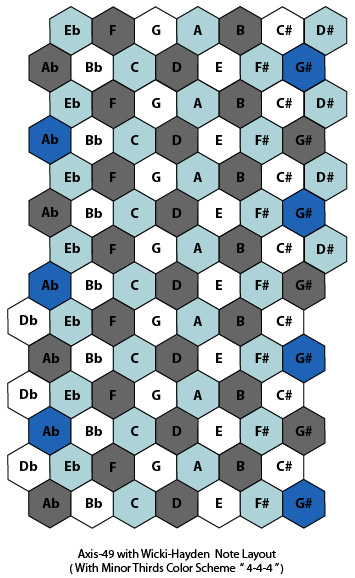The hexagonal Wicki-Hayden note layout has been used for concertinas, button accordions, and more recently for electronic midi instruments. An isomorphic layout, it follows the same principle of isomorphism that is found in many alternative music notation systems.

- The Wicki System—an 1896 Precursor of the Hayden System.
- Thumtronics (now defunct, see its successor iGetIt! Music )
- Music Science Guy’s Website (Ken Rushton)
Wicki-Hayden Layout on an Axis-49 Midi Instrument
The image below illustrates a remapping of the Axis-49 (a midi instrument from C-Thru Music) to the Wicki-Hayden layout. The Axis-49 has been rotated ninety degrees from its usual “wide” orientation to a “tall” orientation. This is necessary in order to realign the hexagonal button pattern. Ideally, the horizontal rows of buttons would then include nine or ten buttons (as shown in the image above), rather than just seven. This restricts the number of keys in which you can play while using the same fingering patterns (and without transposing the instrument).
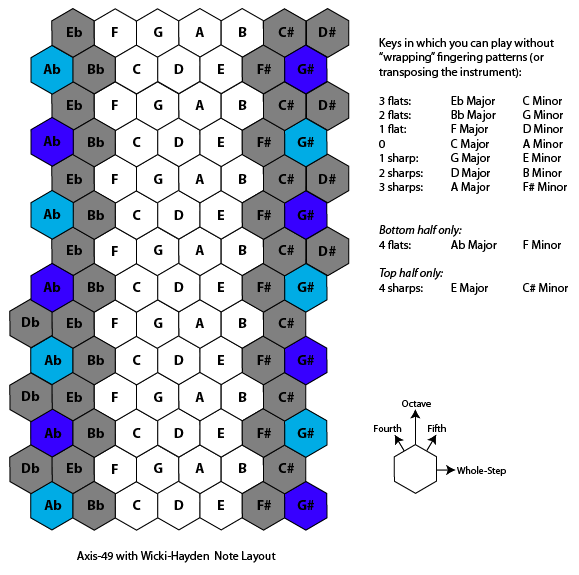
The remapping above is “centered” in terms of the circle of fifths, making it easiest to play in the simplest, most common keys. Without changing the basic fingering patterns you can play in keys that have as many as three flats, or three sharps. In keys with more than three flats or sharps the fingering patterns get ‘wrapped’ from one side to the other as you run out of notes on either side. (If you restrict yourself to the bottom or the top half of the layout, you can also play in keys that have 4 flats or 4 sharps, respectively, without wrapping fingering patterns.)
The color scheme helps to highlight the enharmonically equivalent notes on either side of the button-field, by making the A-flats and G-sharps blue. Those that sound the same are the same shade of blue, either dark or light. This helps with orientation if you have to ‘wrap’ a fingering pattern to the opposite side.
See Music Science Guy’s Website for more on remapping the Axis-49 to the Wicki-Hayden and other note layouts.
More Color Schemes
Here are some more possibilities for color schemes. (The Axis-49 comes with 4 colors of buttons, but not in the right numbers to be able to recreate these color schemes.)
Strong 7-5 and Weak 6-6 Color Scheme
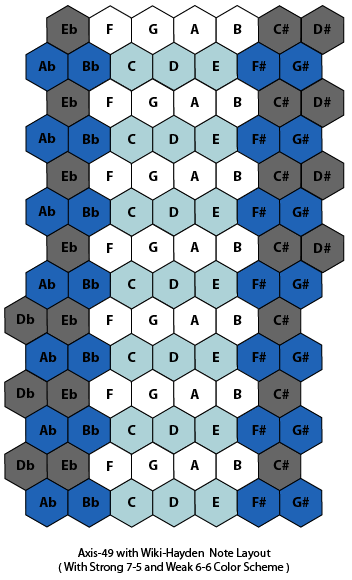
Strong 6-6 and Weak 7-5 Color Scheme
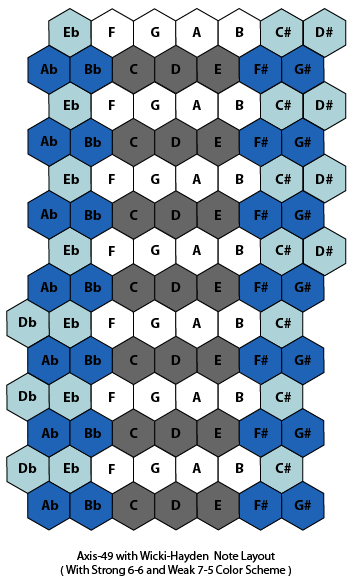
Major Thirds (3-3-3-3) Color Scheme
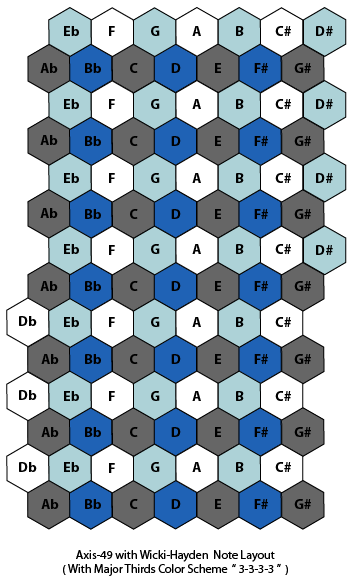
Minor Thirds (4-4-4) Color Scheme
